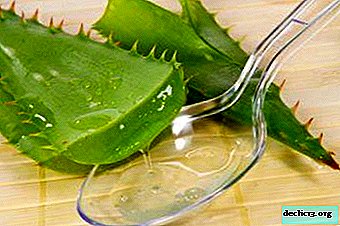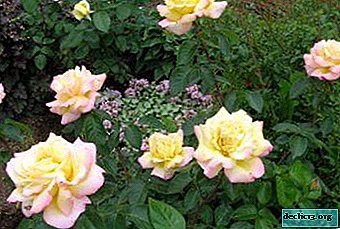Biogenic growth stimulator: dressing indoor flowers with aloe juice

Aloe juice as a growth promoter for plants is gaining more and more ... in a way, boil and cool to room temperature. Only after this, fertilizing plants, bulbs and cuttings is performed.
The well-known and popular aloe plant belongs to succulents. There are up to five hundred species of this flower, which are common in Africa and the Arabian Peninsula. In our homes, the most common types are aloe vera and tree aloe (agave).
How is agave beneficial for plants?
Aloe has excellent bactericidal properties that help activate the vitality of plants. The extract from the leaves of this popular flower has a very rich chemical structure, where 10% are resinous substances.Besides aloe juice contains various organic acids: succinic and malic, cinnamon and citric, isolimonic and p-coumaric, as well as esters, phenols, chrysophanic acid, anthrons, allantoin, emoline, emodin, phytocindes. Aloe leaves and stems contain antioxidants (B vitamins, vitamins E and C, beta-carotene), microelements, macroelements, aromatic and dicarboxylic acids, and other biologically active substances.
Can I use it as a fertilizer?
 In order for a plant to grow and develop safely, it needs certain nutrients, which contribute to the production of vital energy.
In order for a plant to grow and develop safely, it needs certain nutrients, which contribute to the production of vital energy.
As a natural growth promoter, flower growers are increasingly using substances of organic origin that can compete with chemicals, but at the same time they are environmentally friendly and do not adversely affect indoor flowers.
So Agave juice is a biogenic growth stimulator that accelerates metabolism and cell regeneration.. The advantage of extracting from leaves is that it is non-toxic, non-addictive in flowers, well tolerated by them and practically has no drawbacks. As a nutritious fertilizer, succulent juice is used for weak and poorly developing plants with weakened stems and leaves.
You can not use freshly squeezed juice from aloe leaves, since it can work the other way around: slow down the growth of already weakened indoor flowers and lead to their death.
How to feed?
Aloe juice is fed by weakened flowers with slow growth. It is best to prepare fertilizer from a plant whose age is at least four years.
The recipe for a growth stimulator for indoor flowers:
- Cut the lowest leaves.
- Place the cut leaves in a plastic bag and send for a week in the refrigerator.
- Grind the leaves in a blender or in a meat grinder, squeeze juice out of them, filtering it through cheesecloth.
- Prepare a solution: for 1.5 liters of water - 1 teaspoon of juice.
Old aloe leaves contain more nutrients than young leaves.
The recipe for the nutritional composition for plants:
- Cut off the most mature sheets.
- Place the cut sheets in a deep container.
 Mash the leaves to make a uniform green mass.
Mash the leaves to make a uniform green mass.- Mix a spoonful of the resulting mass with 200 ml of water and shake thoroughly.
- Cover and place in a cool dark place for seven days.
- After a week, add warm boiled water to get a 5 liter solution.
With this solution, it is good to carry out the root fertilizer of indoor flowers. Soak the composition of seeds, bulbs, cuttings for five hours, and then plant them in a container with soil, without washing away the nutrient solution. As a rule, flowers processed in this way are accepted and grow very quickly and do not get sick.
What plants can be so fertilized?
Aloe juice can be used as top dressing and stimulate the growth of indoor plants and flowers. In addition, the practice of gardeners has shown that succulent juice is also successfully used in agriculture in order to accelerate the germination of shoots and the formation of the root system of seedlings, it stimulates flowering and the formation of ovaries of fruit crops.
Experience has shown that even expired seeds, kept in solution with aloe juice, give amicable seedlings. Agave juice, whose leaves are kept in a dark place at low temperature, becomes more useful for seed germination and rooting of cuttings. Seeds of tomatoes, eggplant, cabbage, radish, lettuce, soaked in a solution with aloe, germinate well and are less susceptible to damage by fungi and rot than untreated seeds.
It is impossible to sustain pumpkin, pepper, onion, celery seeds in aloe juice. The seeds of these crops can only be soaked in water.
Soaking seeds is only suitable for gardeners who grow vegetables exclusively from their own seeds. Seeds purchased in stores that are already pickled, inlaid or polished this method is not suitable.Useful video
We suggest watching a video on how aloe juice is used as a fertilizer for plants:
Conclusion
All plants need proper care. For this, it is not necessary to purchase expensive fertilizers. Often the necessary funds grow on a nearby windowsill, with the proper use of these home helpers you can get well-groomed, lush, flowering plants.

 Mash the leaves to make a uniform green mass.
Mash the leaves to make a uniform green mass.















